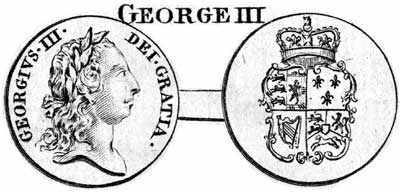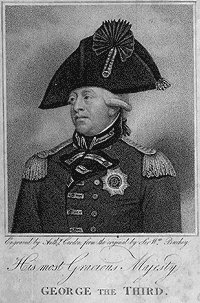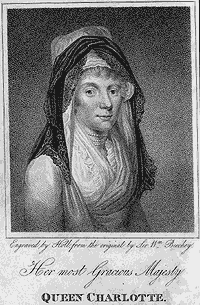|

NOTES ON ISSUE 1: GLOSSARY
PART 1 OF 5
Printable View
It was the best of times, it was the
worst of times, it was the age of wisdom, it was the age of
foolishness, it was the epoch of belief, it was the epoch of
incredulity, it was the season of Light, it was the season of Darkness,
it was the spring of hope, it was the winter of despair, we had
everything before us, we had nothing before us…. [I]n short, the period
was so far like the present period, that some of its noisiest
authorities insisted on its being received, for good or for evil, in
the superlative degree of comparison only.
The period invoked by the opening chapter of A Tale of Two Cities
is the late 18th century – specifically (as we learn a little later on)
1775; and Dickens’ “best of times” and “worst of times” initiates a
theme that helps prepare us for one of the major causes of the French
Revolution – the coexistence of opposed extremes (such as the
coexistence of immense wealth and immense poverty in France) in the
pre-revolutionary period.
The “season of Light,” coexisting with
the “season of Darkness,” invokes another irony of the period.
Though the “Enlightenment” (usually associated with the move from the
superstitious world view of the Middle Ages to the rationalism of
18th-century philosophy and science) may be applied to aspects of
various
historical periods, the word itself became part of European lexicons in
the 18th century (in French, the word is “Lumières”)
(Roberts 268). If, however, the “Enlightenment” was a period of reason,
rationality, science, etc., it was likewise a period of pseudo-science
and new kinds of superstition. As one history of the period puts it,
“The eighteenth century was the century of mesmerism as well as of
inoculation; the cautious rationalism and theism of the early
freemasons ramified in a few decades into the luxuriant dottiness of
mystical and occult masonry” (Roberts 270). Thus the period in which
the novel opens is a period both of Light and Darkness – a period of
contrasts.
The “present period” of the novel is
of course 1859, when A Tale of Two Cities first began serial
publication. This period is introduced as “so far like” 1775 perhaps
because of the persistence of contrasting extremes: In the 19th
century, England led the Industrial Revolution (for which the ground
was laid by 18th-century developments like the steam engine); yet
unprecedented scientific, technological, and industrial progress
coexisted with the vogue of “spirit rappers,” mediums, phrenologists,
and so forth. Dickens makes reference to such phenomena in the opening
chapter when he notes that “Spiritual revelations were conceded to
England at that favoured period, as at this” (Ch.1).
There were a king with a large jaw and a queen with a
plain face, on the throne of England; there were a king with a large
jaw and a queen with a fair face, on the throne of France.
In 1775 (the year in which the story of A Tale of Two Cities
begins), the King and Queen of France were Louis XVI (r. 1774-93) and
his consort, Marie-Antoinette. In England, George III (r. 1760-1820)
and his queen, Charlotte Sophia, were the ruling couple.


These illustrations of Louis XVI and Marie-Antoinette,
taken from the Artist’s Edition of Carlyle’s French
Revolution (1893), show us the “king with a large
jaw” and the “queen with fair face” of France.

Since Dickens would probably have known George
III’s profile from coins (Sanders 23), we are here including
an illustration of the English “king with a large jaw”
from an engraving – “A New Collection of ENGLISH
COINS from Henry IV to George III, Accurately taken from the
Originals” – from Thornton’s New, Complete,
and Universal History, Description, and Survey of the Cities
of London and Westminster [&c.] (1784). Dickens was
born in 1812, and though George III was nominally king until
1820, his increasing mental instability necessitated the transfer
of power to his son, who acted as Prince Regent from 1810 until
George III’s death (at which point the Regent became George
IV). It is therefore probable that, although Dickens was nearly
eight years old before George III died, he would have known
the monarch mainly from images on coins.
 
These illustrations of George III and his queen, Charlotte Sophia, are
taken from Holt’s The Public and Domestic Life of His Late Most
Gracious Majesty, George the Third (1820). They offer more
conventional portraits of the king “with a large jaw” and the “queen
with a plain face.”
Mrs. Southcott had recently attained her
five-and-twentieth blessed birthday, of whom a prophetic private in the
Life Guards had heralded the sublime appearance by announcing that
arrangements were made for the swallowing up of London and Westminster.
Joanna Southcott was indeed 25 years old in 1775, though not yet known
for the alleged oracular powers that eventually made her famous. The Dictionary
of National Biography gives this account of
SOUTHCOTT, JOANNA (1750-1814),
fanatic, daughter of William Southcott … by his second wife Hannah, was
born at Gittisham, Devonshire, in April, 1750, and baptized on 6 June
1750 at Ottery St. Mary, Devonshire. Her father was a small farmer, and
as a girl she did dairy work. Her first love affair was with Noah
Bishop, a farmer’s son at Sidmouth, where her brother Joseph lived.
After her mother’s death, an event which confirmed her in strong
religious impressions (her father thought her too religious), she went
out to service, her first place being as shop-girl at Honiton, where
she rejected several suitors. For a short time she was a domestic in
the family of a country squire, but was dismissed because a footman,
whose attentions she had spurned, affirmed that she was “growing mad”;
she claims that her removal had been divinely intimated to her. She
next got employment at Exeter, living for many years in various
families, as domestic and assistant in the upholstery business. Her
character was blameless and her service faithful. She attended church,
usually the cathedral, twice every Sunday, and was a communicant; she
also regularly frequented Wesleyan services before and after church
hours. Though pressed to join the Methodist society, she did not do so
till Christmas 1791, and then “by divine command.” (278)
In 1775, then, Joanna Southcott was not
yet known as the prophetess that she became thereafter (though her
story would have been well known to Dickens’ readers in 1859). She
began to write prophecies in 1792, and – when they were disbelieved –
“adopted the plan of sealing up her writings, to be opened when the
predicted events had matured” (DNB 278). In 1801, she began to
publish her works, gained followers, and underwent several “trials” of
her predictions; in 1813, at the age of sixty-three, it was announced
that she was pregnant with the second Christ, Shiloh:
Of nine medical men consulted on
the case, six admitted that the symptoms would, in a younger woman,
indicate approaching maternity. The excitement of Joanna’s followers
knew no bounds. In September a crib costing £200 was made to
order by Seddons of Aldergate Street; £100 was spent in
pap-spoons [feeding-spoons for the baby]; a bible was superbly bound as
a birthday present. The “Morning Chronicle,” which had inserted an
advertisement for “a large furnished house” for a public accouchement,
announced next day that “a great personage” had offered “the Temple of
Peace in the Green Park.” (279)
Southcott herself apparently realized
that she was dying, returned the parcels intended for Shiloh, and
requested that an autopsy be performed four days after her death. She
died on December 27, 1814, and the medical examination made in
compliance with her request showed “no functional disorder or organic
disease,” suggesting rather that “‘all the mischief lay’ in the brain,
which was not examined, owing to the high state of putrefaction” (279).
The “prophetic private” in the Life Guards to whom Dickens refers
predicted – in 1750, the year of Joanna Southcott’s birth – that London
and Westminster would be destroyed. Dickens associates the date of the
life-guardsman’s prediction with the date of Joanna Southcott’s
nativity, facetiously suggesting that the guardsman’s prophesy was in
fact prophetic, not of the swallowing of London and Westminster, but of
the birth of another prophet. Though rapidly confined to Bedlam (the
London insane asylum) for his remarks, the life-guardsman’s prophecy
instigated panic in London – “The London churches were crowded, and the
Bishop of London called his flock to repentance in a pastoral letter of
which some 10,000 copies are said to have been sold” (Sanders 29).
Dickens may be conflating the 1750 prophesy of the life-guardsman with
a similar 1775 prophesy – not originated by a life-guardsman – to the
effect that “on [February 1, 1775] the people about Deptford and
Greenwich had been alarmed with the reveries of a crazy prophet, who
had predicted that on this day these towns were to be swallowed up by
an earthquake” (Annual Register for the Year 1775
88). (Deptford and Greenwich are villages about 4.5 and 5 miles east of
the center of London [Harper, “The Road to Dover”], now absorbed into
the general metropolitan area.)
Even the Cock-lane ghost had been laid only a round
dozen years, after rapping out its messages, as the spirits of this
very year last past (supernaturally deficient in originality) rapped
out theirs.
The Cock-lane ghost ostensibly began to disturb the residents
of a house in Cock Lane, West Smithfield (in London) in the
first few months of 1762 (and had thus been laid to rest slightly
more than a dozen years in 1775). Its knockings and scratchings
were supposed to derive from the spirit of woman who had been
murdered and was buried nearby. Though the phenomenon was ultimately
exposed as a fraud, it attracted considerable popular interest;
and when Mr. Parsons, the father of the 12-year-old girl first
disturbed by the “Ghost,” was sent to prison for
a year and forced to stand in the pillory for perpetrating the
sham, Londoners collected a subscription for his well-being
(Sanders 30).
Dickens’ reference to the “spirits of
this very year last past” refers to the “spirit rappers” of the late
1850s (which announced themselves chiefly by shaking tables and rapping
out messages). Dickens satirized spirit mediums – people who claimed to
be in communication with the dead – in his magazine Household Words.
“Spirits Over the Water,” by James Payn, appeared in the June 5, 1858
number of Household Words, reporting the vogue of
spirit-rappers and mediums in America; and Dickens himself, in the
February 20, 1858 number, penned an article entitled
“Well-Authenticated Rappings.” In this piece, a spirit by the name of
“Port!” inaugurates the day after Christmas by rapping on the writer’s
(Dickens’) head, and a spirit named “Pork Pie” follows up the “previous
remarkable visitation” by instigating orchestral maneuvers “resembling
a melodious heart-burn” (218). These notices, appearing in 1858 – the
year before A Tale of Two Cities commenced publication –
report the popularity of the “spirits of this very year last past”; yet
Dickens had been making fun of spirit rappers for most of the preceding
decade. In an 1853 article called “The Spirit Business,” Dickens
reviewed a series of publications on spirit-rapping and mediums in
America, giving, among other things, excerpts of spirit communications
such as the following:
FROM AN ANONYMOUS SPIRIT, PRESUMED
TO BE OF THE QUAKER PERSUASION[:] “Dear John, it is a pleasure to
address thee now and then, after a lapse of many years. This new mode
of conversing is no less interesting to thy mother than to thee. It
greatly adds to the enjoyment and happiness of thy friends here to see
thee happy, looking forward with composure to the change from one
sphere to another.” (218)
He also transcribes
…a few individual cases of
spiritual manifestation: – There was a horrible medium down
in Philadelphia, who recorded of herself, “Whenever I am passive, day
or night, my hand writes.” This appalling author came out under the
following circumstances: – “A pencil and paper were lying on the table.
The pencil came into my hand; my fingers were clenched on it! An unseen
iron grasp compressed the tendons in my arm – my hand was flung
violently forward on the paper, and I wrote meaning sentences without
any intention or knowing what they were to be.” The same prolific
person presently inquires, “Is this insanity?” To which we take the
liberty of replying, that we rather think it is. (219)
Further, another unwilling medium
attended a gathering and
…put forth a strong effort of the
will to induce a passiveness in my nervous system; and, in order that I
might not be deceived as to my success, resigned myself to sleep….
I suppose I was unconscious for thirty minutes” [italics and
ellipses are Dickens’]. After[wards] this seer had a vision of stalks
and leaves, “a large species of fruit, somewhat resembling a
pine-apple,” and “a nebulous column, somewhat resembling the milky
way,” which nothing but spirits could account for, and from which
nothing but soda-water, or time, is likely to have recovered him. We
believe this kind of manifestation is usually followed by a severe
headache next morning, attended by some degree of thirst. (219)
Mere messages in the earthly order
of events had lately come to the English Crown and People, from a
congress of British subjects in America.
Between September 5 and October 26, 1774, the first Continental
Congress of England’s American colonies met in Philadelphia; it
presented a list of grievances to the English government in January of
the following year. This “message” from the “British subjects in
America” preceded the Declaration of Independence (1776) and the
ensuing Revolutionary War (Sanders 30; Maxwell 442; Roberts 345). The Annual
Register of 1775 gives a long account of the Continental Congress’
meeting and the various “messages” sent to the crown, including a
…declaration of rights, to which,
they say, the English colonies of North-America are entitled, by the
immutable laws of nature, the principles of the English constitution,
and their several charters or compacts. In the first of these are life,
liberty, and property, a right to the disposal of any of which, without
their consent, they had never ceded to any sovereign power whatever.
That their ancestors, at the time of their migration, were entitled to
all the rights, liberties, and immunities, of free and natural born
subjects; and that by such emigration, they neither forfeited,
surrendered, nor lost, any of those rights. They then state, that the
foundation of English liberty, and of all free government, is a right
in the people to participate in their legislative council; and proceed
to shew, that as the colonists are not, and, from various causes,
cannot be represented in the British parliament, they are entitled to a
free and exclusive power of legislation in their several provincial
legislatures, where their right of representation can alone be
preserved, in all cases of taxation and internal policy, subject only
to the negative of their sovereign, in such manner as had been
heretofore used and accustomed [etc.]. (25-6)
In addition to this declaration, the Continental
Congress “proceeded to frame a petition to his Majesty,
a memorial to the people of Great Britain, an address to the
colonies in general,” etc., the “petition to his
majesty contain[ing] an enumeration of their grievances”
(28). After giving a protracted account of the assembly and
communications of the Continental Congress, stressing both its
declarations of loyalty to the English and its objections to
the conduct of English rule, the Annual Register concludes
its entry with a general commendation: “[I]t must be acknowledged,
that the petition and addresses from the congress have been
executed with uncommon energy, address, and ability; and that
considered abstractedly, with respect to vigour of mind, strength
of sentiment, and the language, at least of patriotism, they
would not have disgraced any assembly that ever existed”
(36).
|

